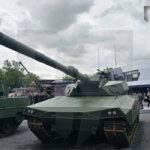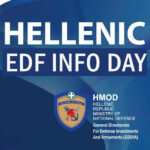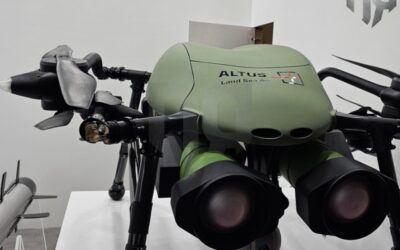HISTORY
HISTORY

Born on February 26, 1938 in the village of Tsada in the Paphos District, Evagoras Pallikaridis was the last and the youngest hero of the National Organisation of Cypriot Fighters (EOKA) to be hanged by the English colonists.
His fighting spirit and his concern for the homeland Greece could not allow him not to engage in the struggles for the Unification of Cyprus with Greece.
At the age of 17, he dropped out of school to join the EOKA fighting groups. He soon became an active member and at the same time became the target of English conquerors.
On December 18, 1956, Evagoras Pallikaridis, while carrying weapons and food, was confronted with an English patrol and was unable to react.
In his possession, they found a Bren machine gun and three magazines.
At his trial on February 25th of the same year, Evagoras did not allow his lawyers to defend him and admitted his guilt, saying, “I know you will hang me. Whatever I did, I did it as Greek Cypriot who seeks his freedom. Nothing else”.
Thus, on March 14, 1956, at the young age of 19, Evagoras Pallikarides was hanged by the English colonists as the youngest and last EOKA hero hanged. The hero’s tomb is in Nicosia, in the Imprisoned Graves (Fylakismena Mnimata), along with the other heroes who faced the gallows, as well as EOKA’s Deputy, Gregoris Afxentiou.
Evagoras Pallikaridis, with his sacrifice, moved the whole Hellenism. In his last letter, he stated:
“I will courageously pursue my destiny. This may be my last letter. But again it doesn’t matter. I’m not sorry for anything. Let’s lose everything. A man can only die once. I will walk happily to my last home. Today or tomorrow, will it make a change? Everybody dies one day. It is a good thing to die for Greece. 7:30 pm. The most beautiful day of my life. The most beautiful time. Don’t ask why.”
Watch the video tribute of ANT1 for the hero (in Greek):
With information from: Ιnstitution for the ΕΟΚΑ liberation struggle 1955-1959
Armenian Genocide Remembrance Day
On this day, 109 years ago, the genocide of the Armenian people by the Ottoman Empire began, with April 24 being the day of…
April 10, 1826 | The heroic Exodus of Messolonghi
Three years after the failed attempt of Kioutachis and Omer Vryonis to capture Messolonghi, the Sultan had a new plan.
Hellenic Army General Staff (HAGS) | Events for the 83rd Anniversary of the Battle of the Forts
On Sunday, April 7, 2024, the 83rd anniversary of the Battle of the Forts (April 6-9, 1941) was celebrated at “LISSE”, “RUPEL”,…
EUROSATORY 2024 | Missile Artillery Solutions from MBDA
With such a large number of interested attendees at MBDA’s pavilion at the Eurosatory 2024 Defence exhibition, the stand reminded of an…
KNDS | Showcases full range of LEOPARD battle tanks at EUROSATORY
KNDS continues to expand its technological advantage in the field of main battle tank development, as we have witnessed at the Defence and…
THEON SENSORS | Distinguishing appearance at EUROSATORY 2024 with new range of products
THEON SENSORS attended the International Defence and Security Exhibition EUROSATORY 2024 as an ambassador of Greek innovation…
Ministry of Defence | Organization of Hellenic EDF Info Day
A Conference entitled “EDF Info Day” is organized in the Amphitheater of the National Gallery on Tuesday, July 9 from 09:00 to 17:00.
ALTUS LSA | Participates in EUROSATORY 2024 with KERVEROS in the foreground
The participation of ALTUS LSA in EUROSATORY 2024 is among the Greek participations of operational significance.
Freddy Beleris | Ιn jail until October
The elected mayor of Heimarra and Member of the European Parliament of New Democracy will remain in prison until October…



















0 Comments